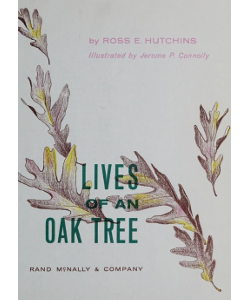Lives of an Oak Tree

Author:
Ross E. Hutchins
Illustrator:
Jerome P. Connolly
Publication:
1962 by Rand McNally & Company
Genre:
Nature, Non-fiction, Science
Pages:
64
Current state:
Basic information has been added for this book.
It has been read but content considerations may not be complete.
Book Guide
Search for this book used on:
In America there are many kinds of oak trees. They range from the small scrub oaks of the West to the stately oaks of the East. Our story could easily be about almost any of these trees, from a live oak, spreading its great branches beside a lazy southern bayou, to a red oak with its crimson leaves adding color to the autumn woods of northern mountains. Actually, I had the graceful white oak in mind as the central figure of the story. These trees grow almost everywhere in the East, sometimes reaching a diameter of 8 feet and an age of nearly 500 years. They have been called the kings of the eastern forests.
Another "character" in this story is the cottonwood, a tree belonging to the poplar and willow family. These trees often grow to a height of 100 feet in 15 years. In May they shed their tiny seeds, each with its attached bit of down of "cotton". The cottonwoods grow almost everywhere in America including river banks of the arid Southwest where they received their Spanish name álamo.
From the dust jacket
Find This Book
Search for this book used on:




